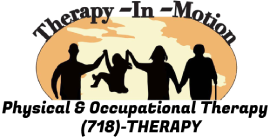
Back, Leg Pain May Be Due to Spinal Stenosis
By: Dr. Abe Kopolovich, DPT, MBA
Spinal stenosis is a very common, but potentially debilitating, condition.
Stenosis is a generic medical term for narrowing. Stenosis in your heart’s blood vessels can lead to a heart attack. Stenosis in your esophagus can lead to choking, in addition to other instances in the human body. Spinal stenosis occurs when your spinal canal narrows and puts pressure on the nerves which travel through the spine, resulting in back and leg pain, numbness or tingling.
How Does Spinal Stenosis Start?
Spinal stenosis is quite common, and marked by a very frequent presentation, ‘the shopping cart sign.’ When someone with advanced spinal stenosis walks, their legs begin to hurt, cramp and may become weak. Other symptoms may include pain and difficulty walking, numbness, tingling, hot or cold sensation, weakness, heavy/ tired feeling in the legs or frequent falling. If a person experiencing spinal stenosis sits and bends forward or leans against something like a shopping cart, their pain improves.

Whats the Risk Age for Spinal Stenosis?
After age 50, the risk of developing spinal stenosis increases, as aging can cause the ligaments (tissues that connect the spine and bones) to become thicker and the discs between vertebrae to break down. Additionally, bone spurs may grow on bones and into the spinal canal. Some people are born with congenital stenosis, a spinal anatomy that is smaller, narrower and makes it much easier to acquire stenosis.
Talk to your primary care provider if you notice any of these symptoms. A physical examination or medical imaging may be utilized to diagnose spinal stenosis. After diagnosis, non-surgical treatments including pain medication or corticosteroid injections may be used to reduce swelling and pain, in addition to posture changes, physical therapy or weight loss.

Spinal Stenosis Treatments
Surgical treatment for spinal stenosis is considered after non-surgical treatments have not resulted in symptom improvement. Common surgical procedures used to treat spinal stenosis include decompression or spinal fusion. Decompression surgery, or laminectomy, involves removing the bone and soft tissues of the spine that are pinching the nerves.
Spinal fusion is performed when there is a contributing deformity of the vertebra or curvature of the spine and involves permanently fusing two or more vertebrae together.

While there is treatment for spinal stenosis when needed, prevention should be a primary focus. Staying physically fit and getting regular exercise can contribute to a healthier spine by improving endurance and strengthening your back muscles. Maintaining a healthy weight can also be beneficial, as it reduces the load placed on the spine.
Remaining active, despite the symptoms of stenosis, is essential and should not be avoided. While this may hurt, and activities may be limited, you will not further hurt your spine. The benefits of activity far outweigh the cons of decreased health and fitness and a sedentary life. Additionally, smoking can cause the spine to degenerate faster and should be avoided.



